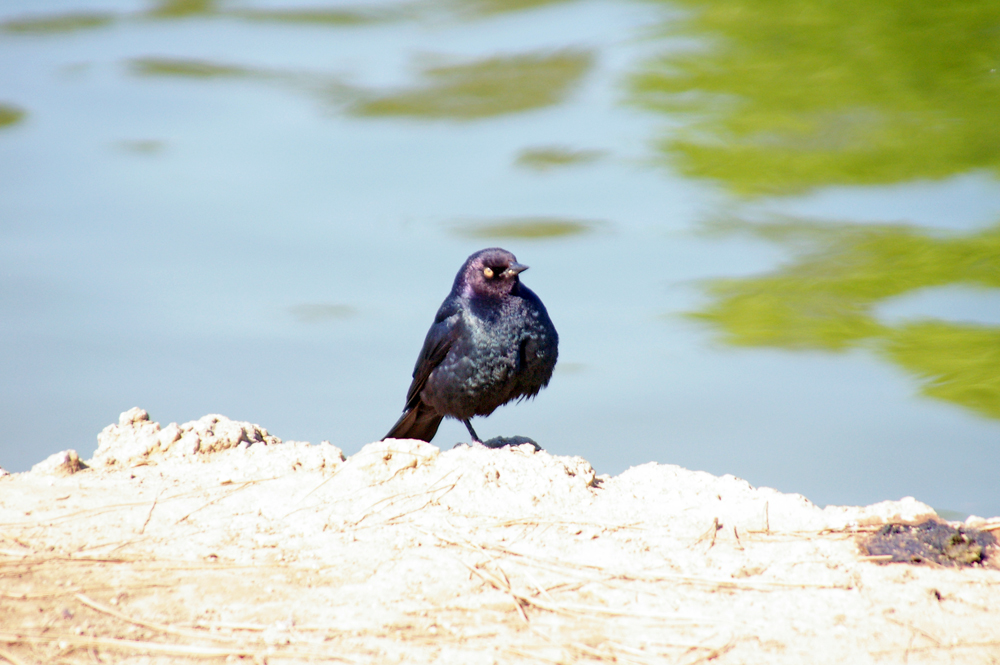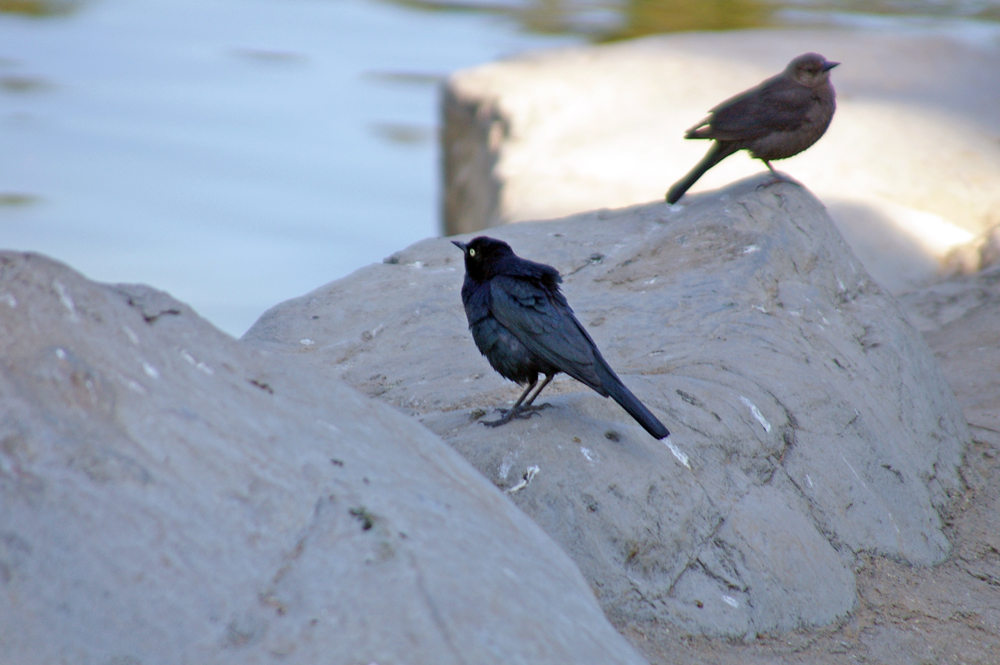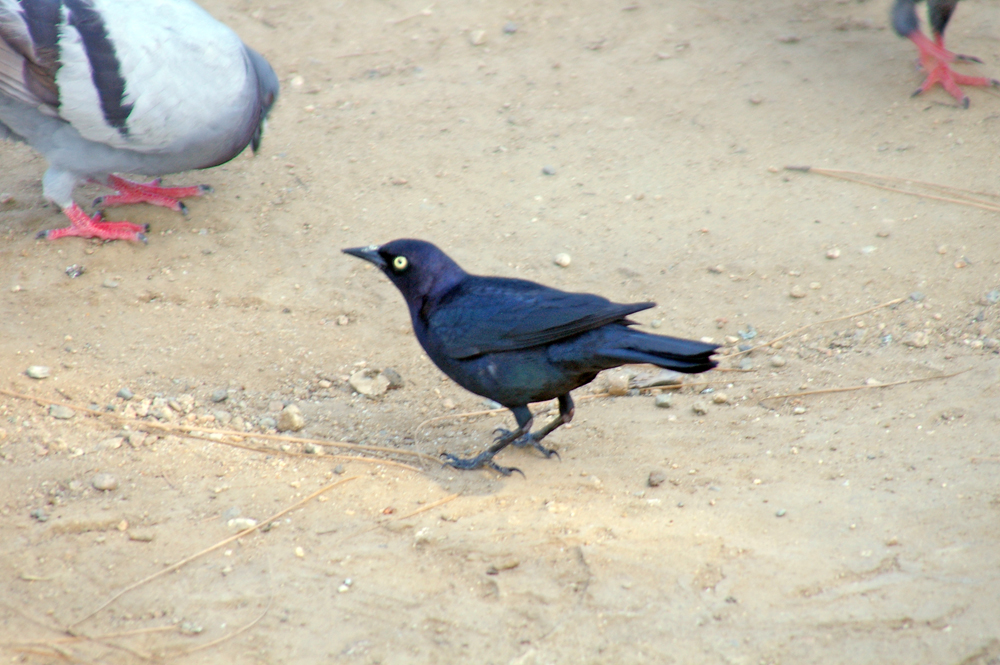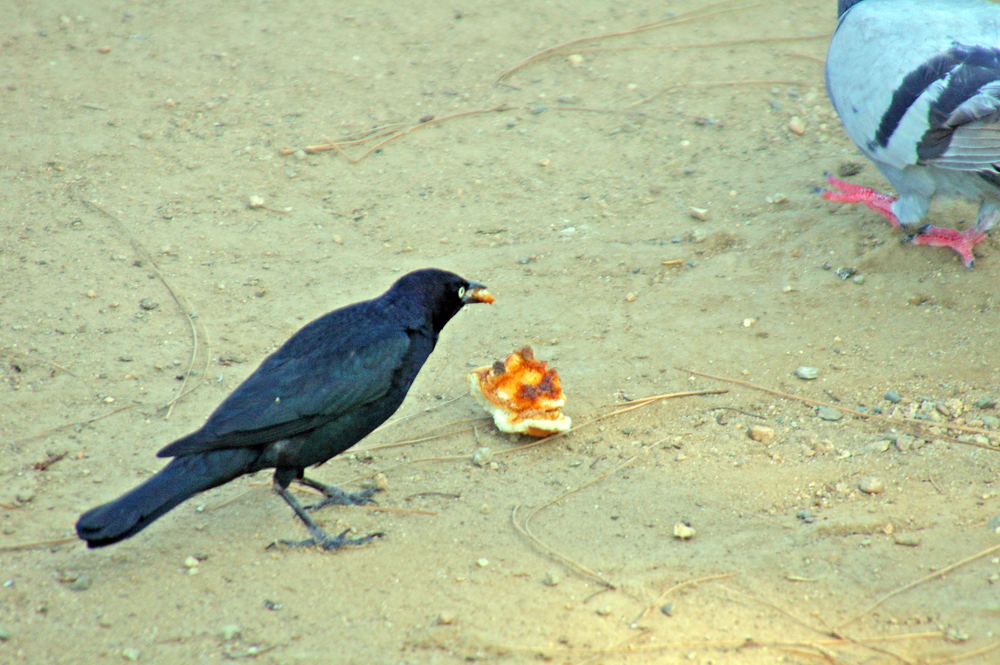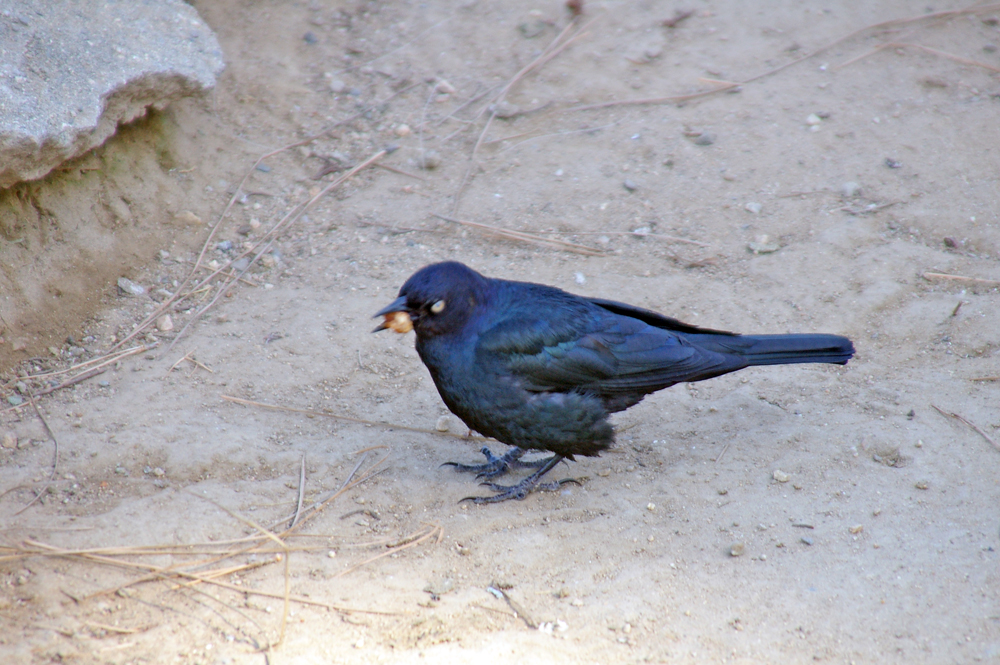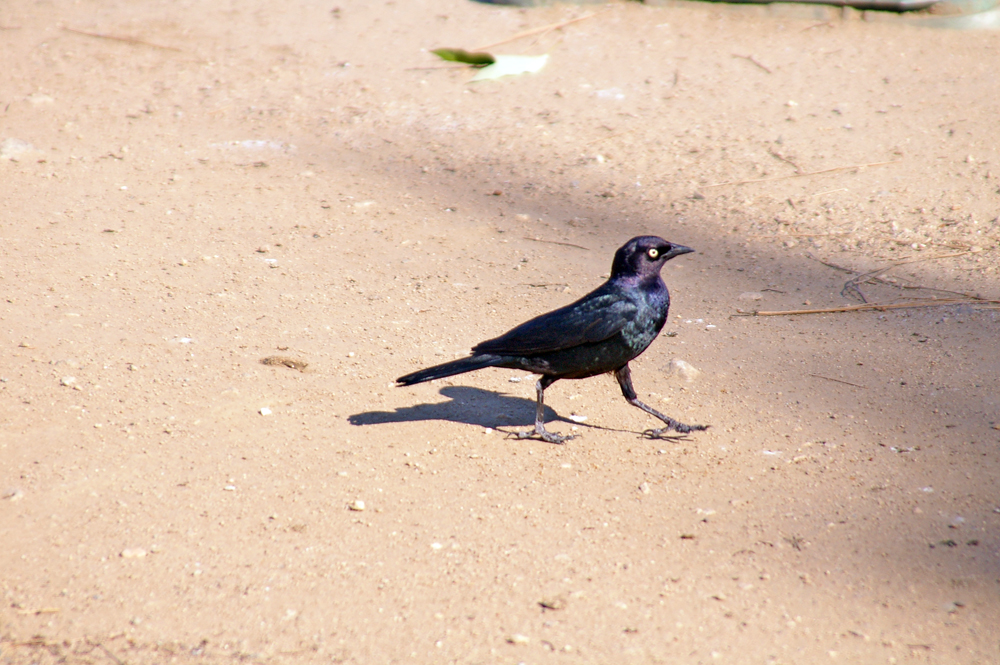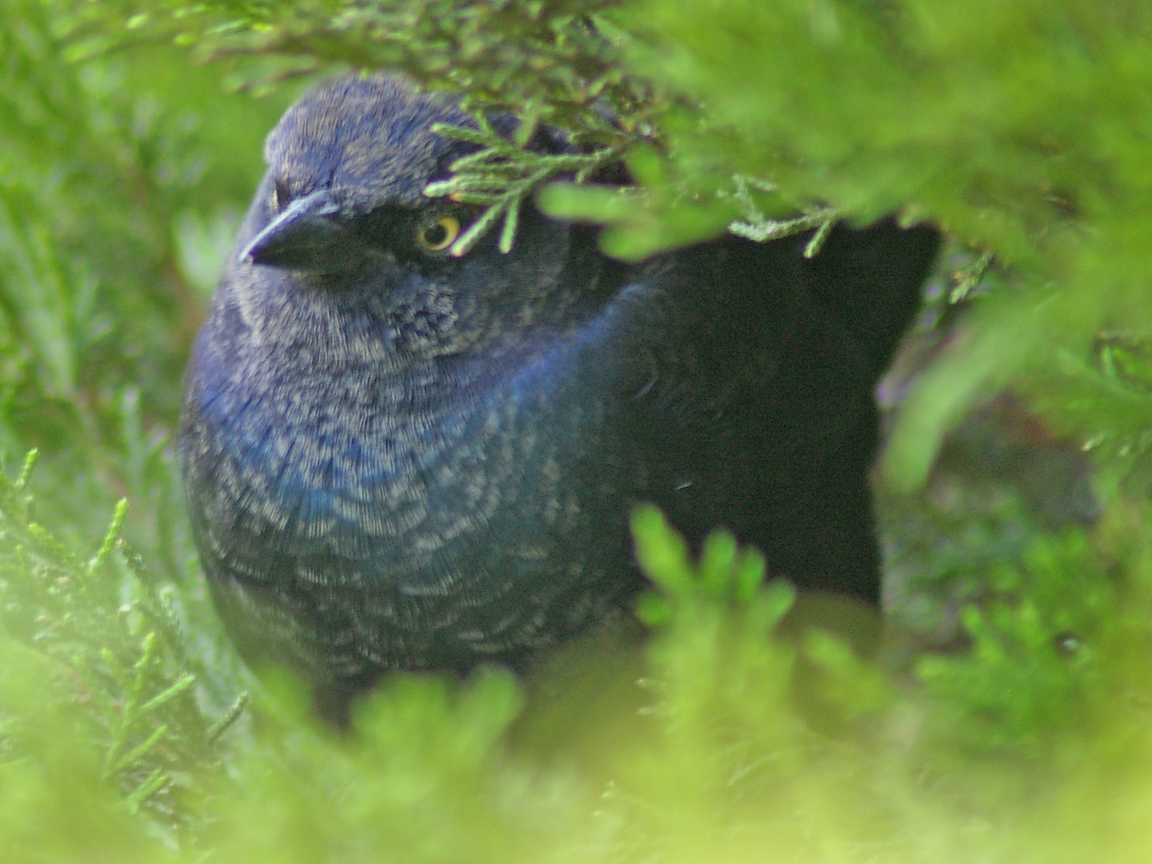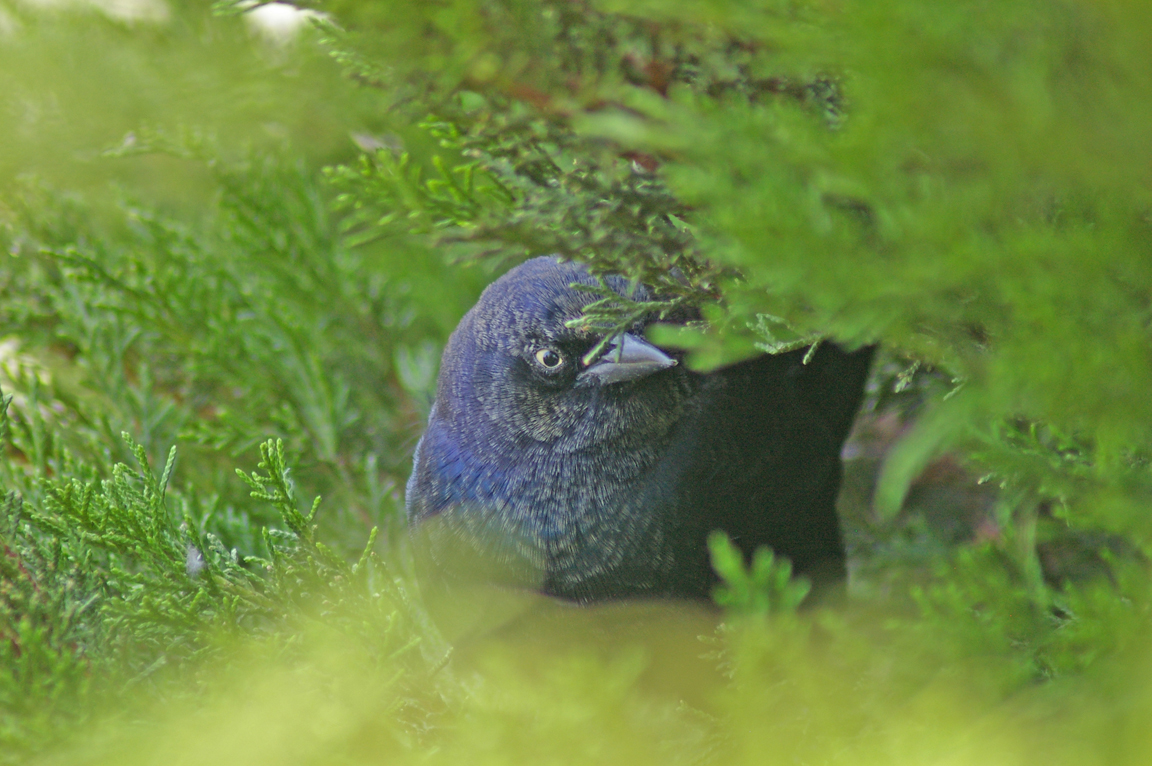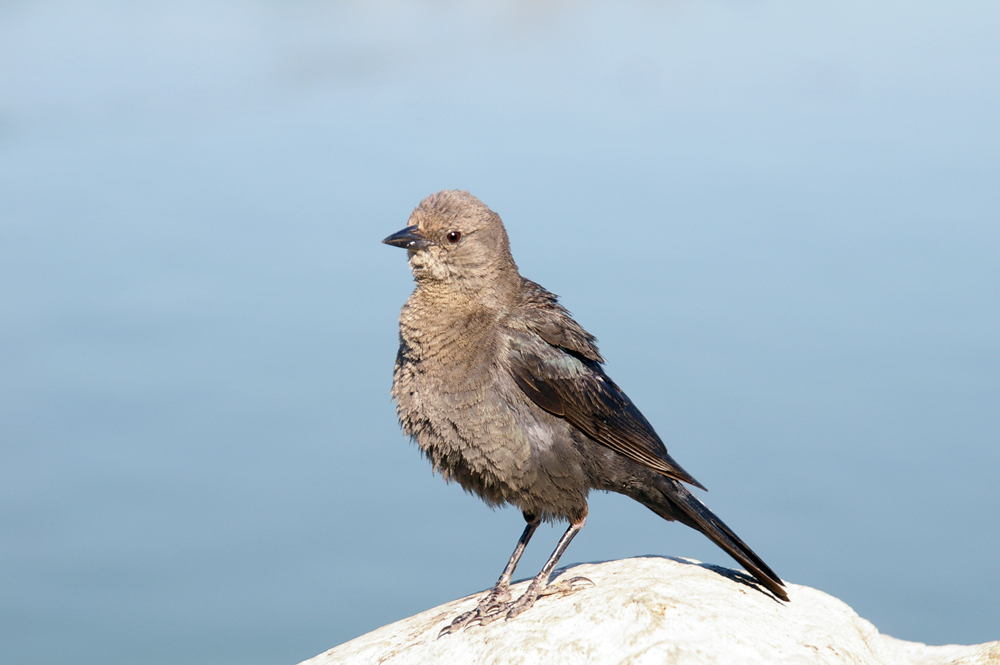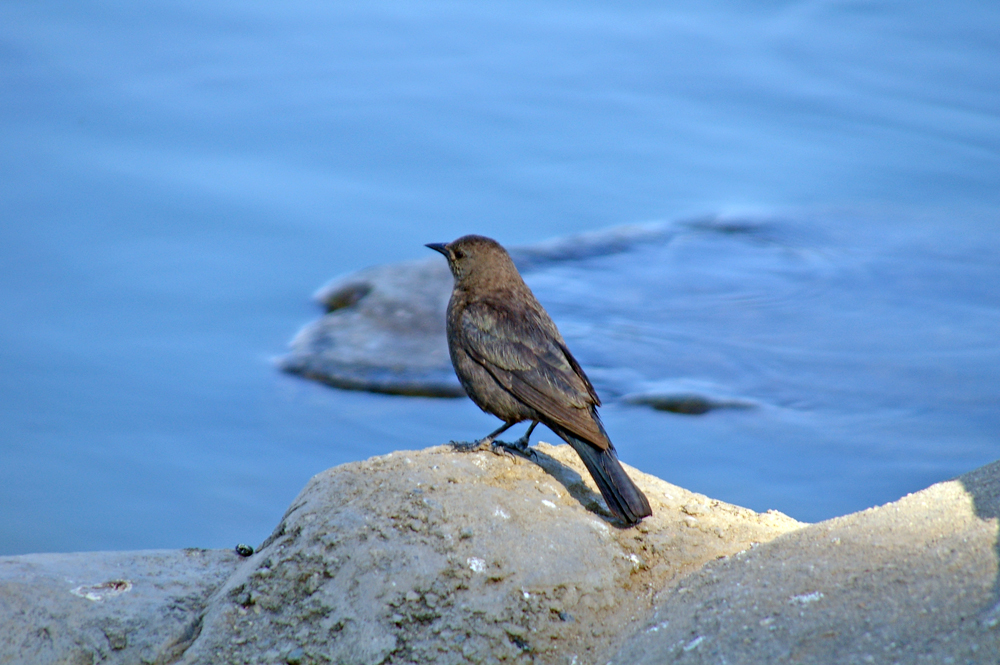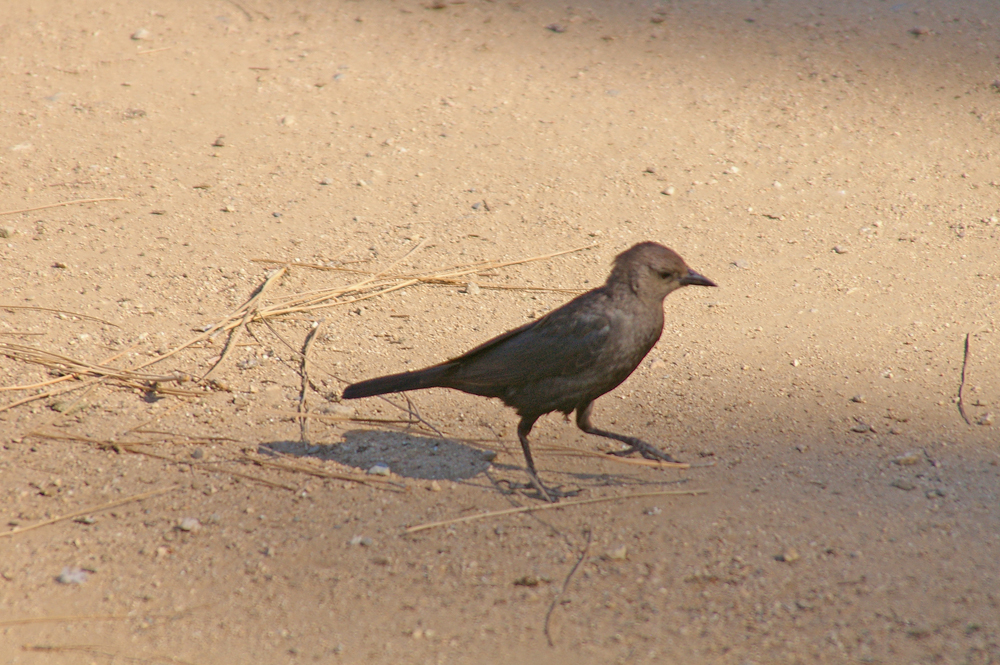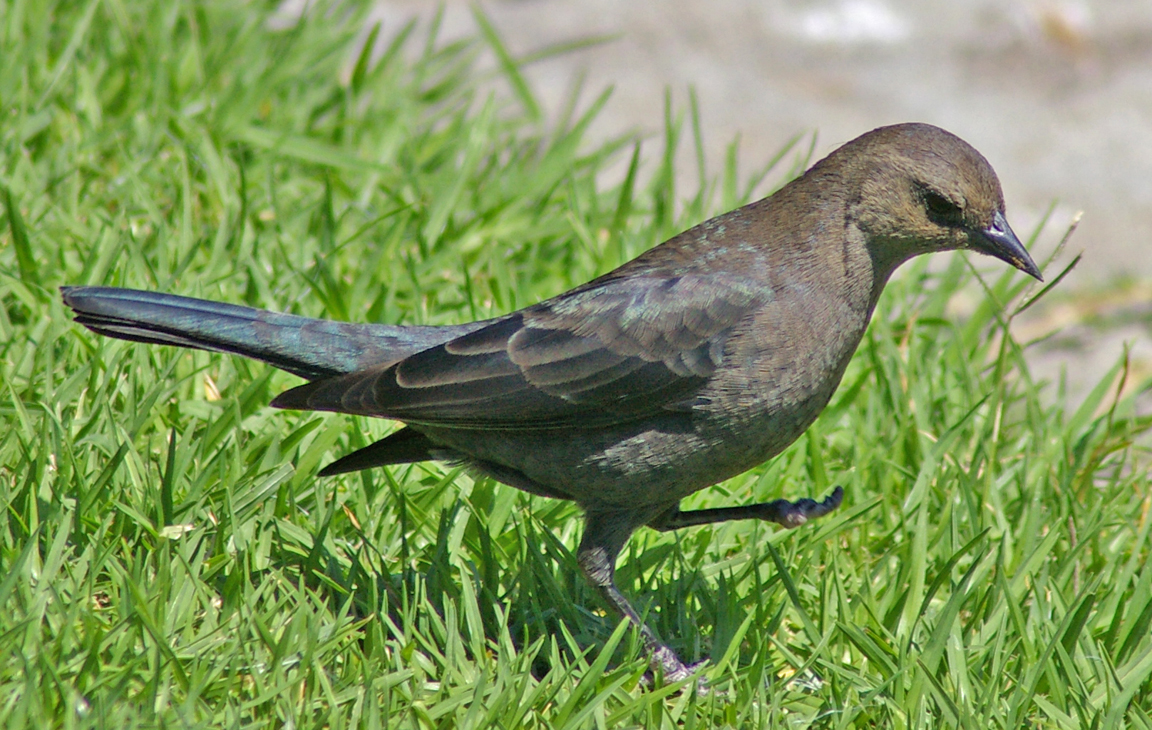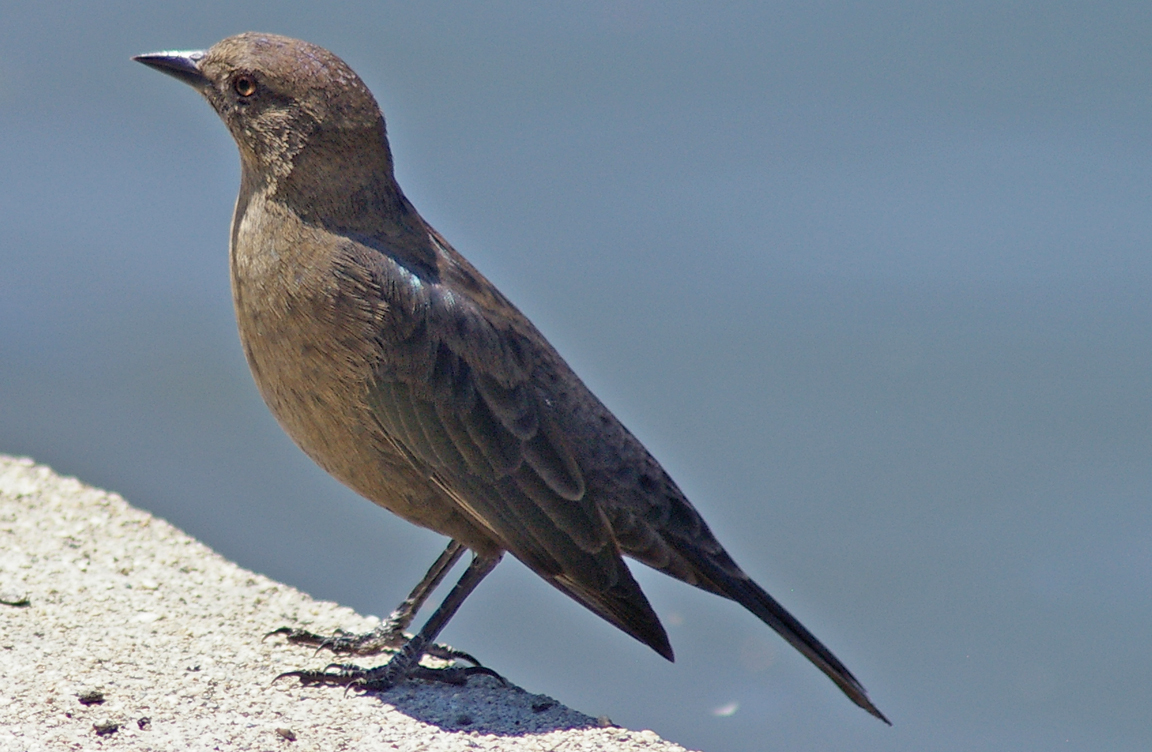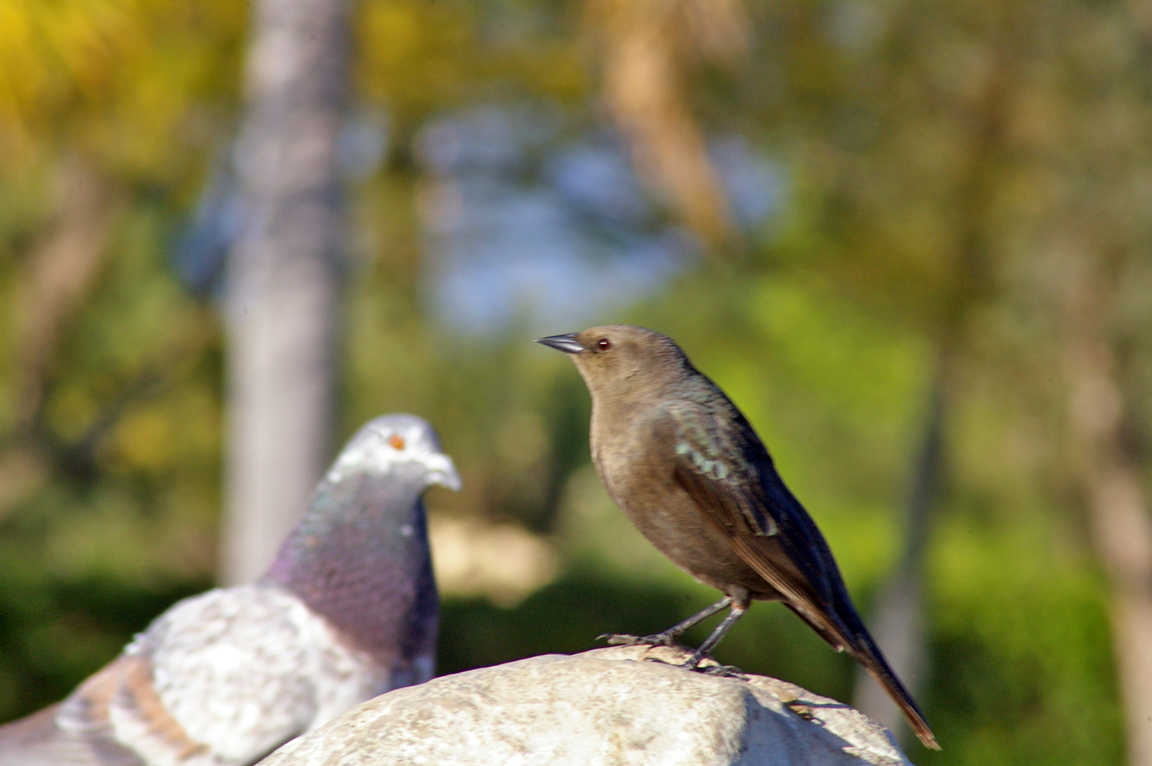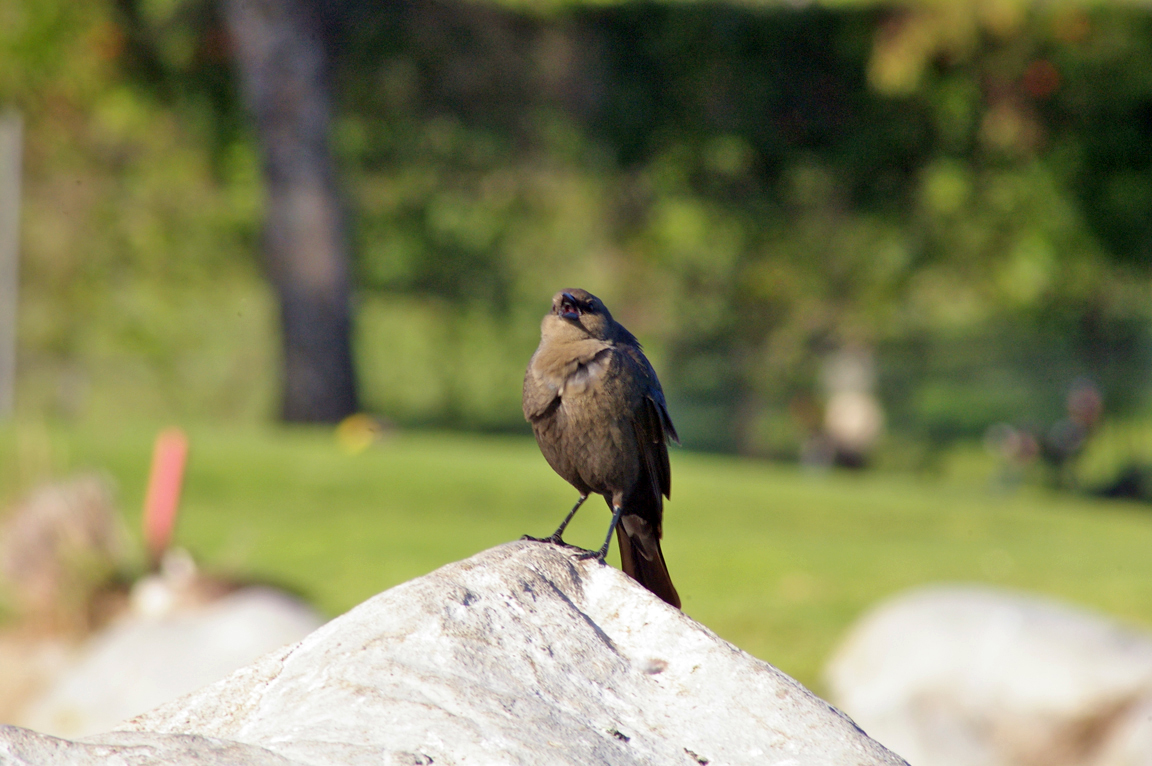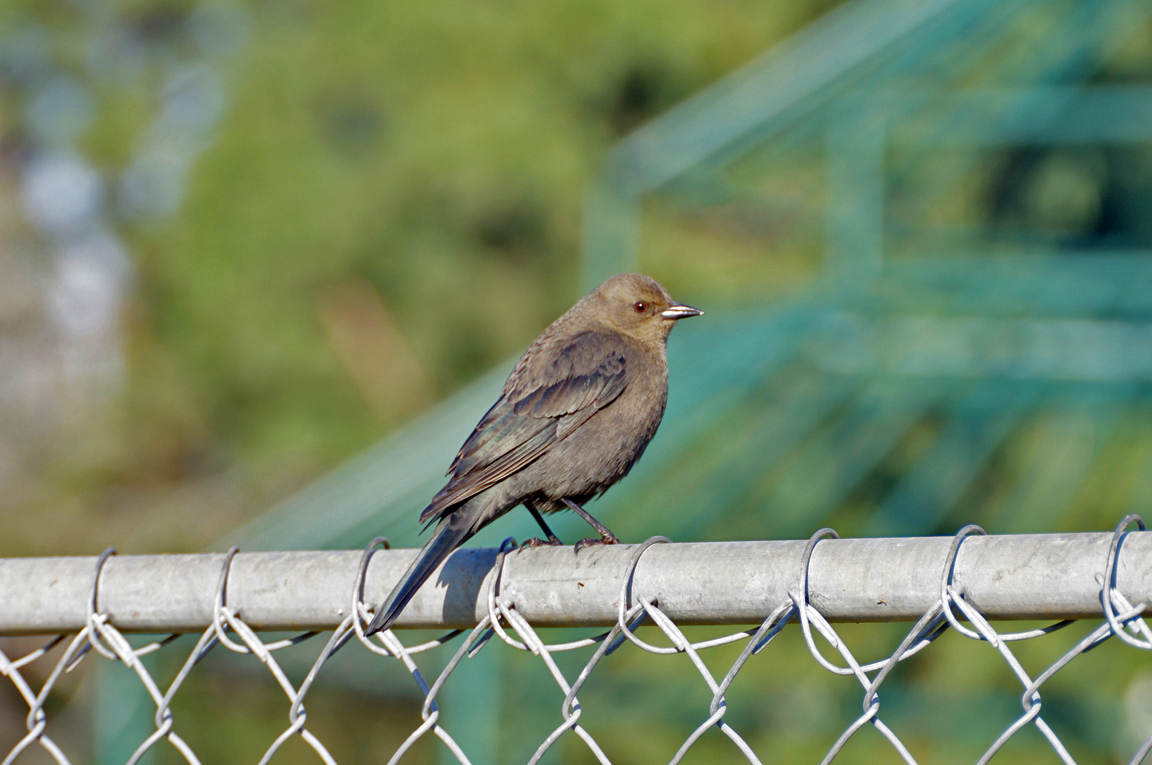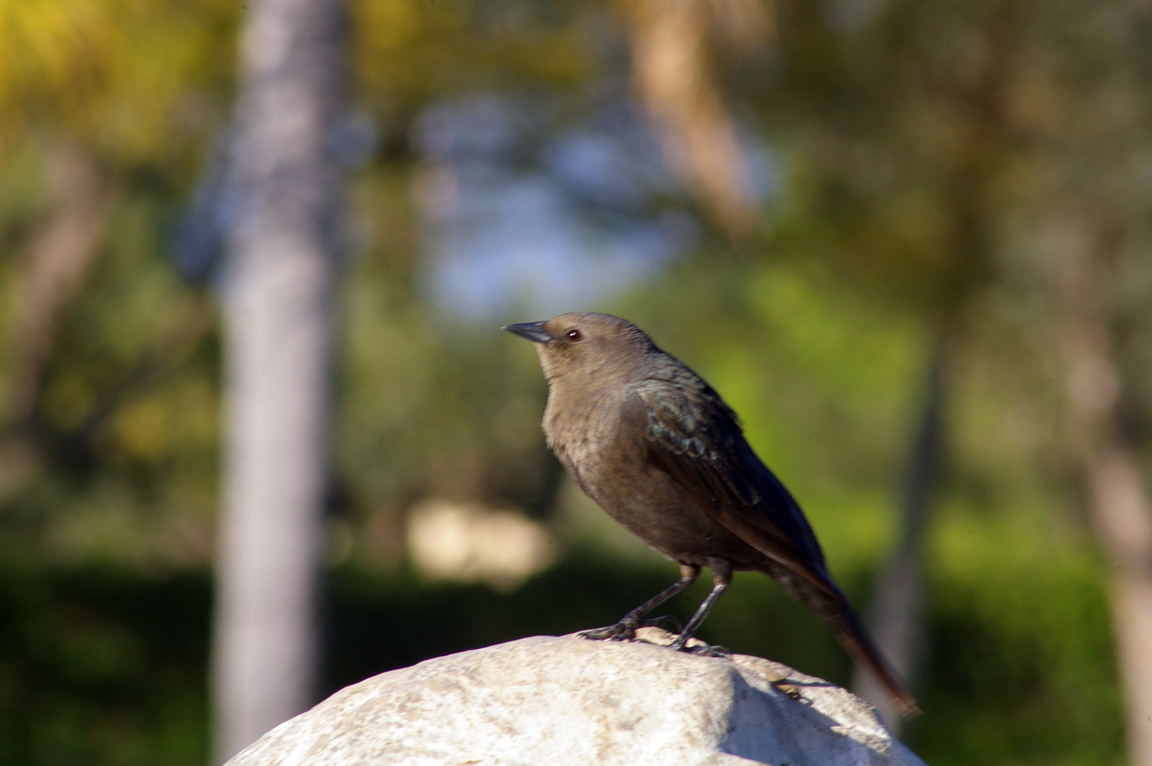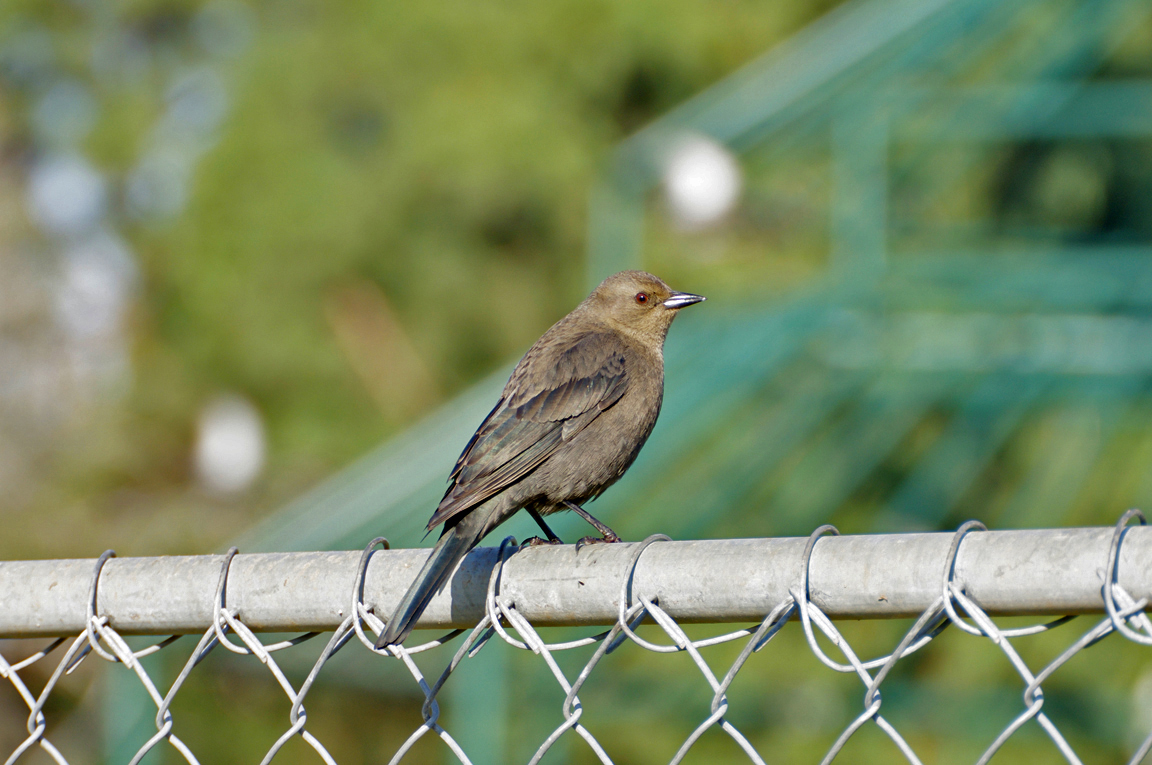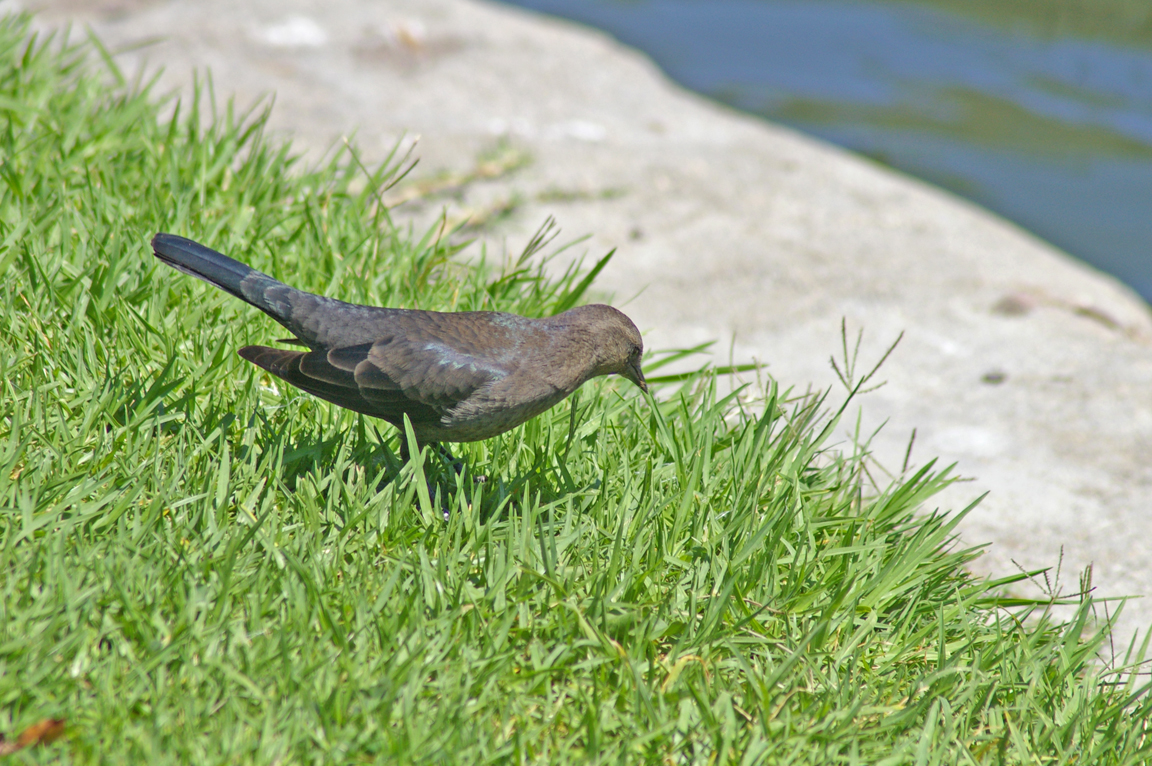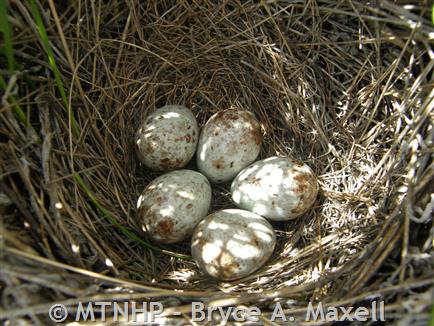|
|
|
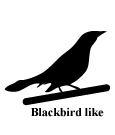 |
Brewer's Blackbird
|
| Euphagus cyanocephalus | |
A shiny blue-green blackbird, the Brewer's Blackbird is common in agricultural and suburban habitats of the West. It has taken advantage of human modifications of the environment to expand its range eastward.
Interesting Information
-
The Brewer's Blackbird spread its range eastward from western Minnesota in the 20th century, taking advantage of human-produced changes in landscape. Where it overlaps with the Common Grackle, the blackbird takes over the open grassy areas, while the grackle dominates in urban and suburban areas.
-
The Brewer's Blackbird nests in compact colonies, numbering from a few pairs to more than one hundred. Occasionally a pair will nest solitarily away from a colony. In the colony a female (sometimes aided by a male) defends a small area directly around her nest site.
-
Within a colony most females choose the same kind of nest site, indicating that females follow the lead of the first nest builders. A colony may change its nest preference from year to year, building all nests in small bushes one year, and in tall trees the next.
Description
Adult Description
-
Size: 20-25 cm (8-10 in)
-
Wingspan: 37 cm (15 in)
-
Weight: 47-67 g (1.66-2.37 ounces) Medium-sized songbird.
-
Medium-long tail.
-
Bill thin and pointed.
-
Male iridescent black with purple and green highlights, female dull gray-brown.
-
Tail square or slightly rounded.
Sex Differences
Male iridescent black. Female dull gray-brown and slightly smaller.
Male
Black all over. Head and neck have purplish iridescence. Body has blue-green iridescence. Shows contrast between colors of head and body. Wing and tail edged with brown. Eyes pale yellow or white.
Female
Grayish brown. Light purplish gloss on head and neck. Faint metallic greenish sheen on body. Wings and tail darker and glossier. Sides of head paler than crown. Dark eyeline. Eyes light to dark brown.
Immature
Juvenile is similar to adult female, but paler and without gloss. Some immature males have brown feather edging.
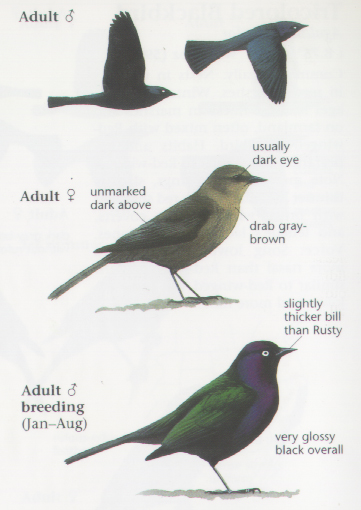
Photo taken from: The Sibley Field Guide by David Allen Sibley
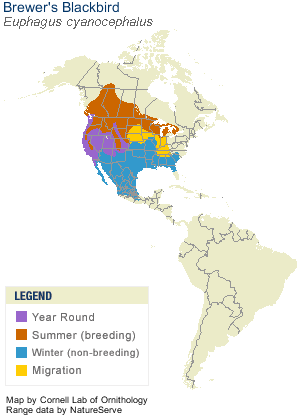
© 2003 Cornell Lab of Ornithology
|
Habitat |
|
Found in a variety of habitats, but prefers open, human-modified areas, such as farmland, fields, residential lawns, and urban parks. |
|
Behavior |
|
Forages on ground, often in large flocks with other blackbirds. |
|
Food |
|
Insects, grain, seeds, and small fruits. |
Taxonomy
| Kingdom: | Animalia |
| Phylum: | Chordata |
| Subphylum: | Vertebrata |
| Class: | Aves |
| Order: | Passeriformes |
| Family: | Icteridae |
| Genus: | Euphagus |
| Species: | Euphagus cyanocephalus |
Similar Species |
|
|
Bird Sound |
|
Song a harsh whirring gurgling "schl-r-r-up." Call a sharp "tschup." |
|
Eggs look like this |
|
Photo taken from: ARCTOS Collaborative Collection Management Solution |
Videos
Brewer's Blackbird
Brewer's Blackbird Bathing
Brewer's Blackbird
Brewer's Blackbird Female #1
Brewer's Blackbird
Brewer's Blackbird Female #2
